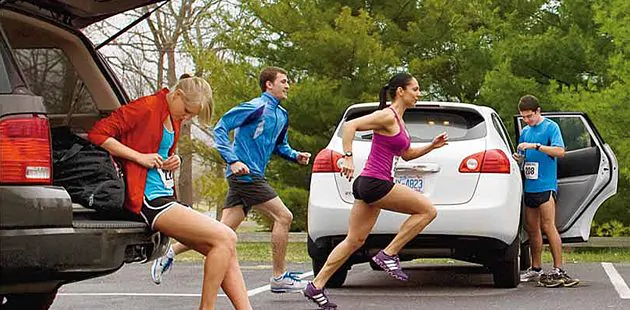Let’s get straight to the point: making a mistake consists not only in omitting both of these sessions (blue pencil error!), but also only one of them (red pencil!).
There is no race or training session carried out properly that does not include, at the beginning and at the end, an adequate preparation phase and disposal of the ‘waste’ accumulated during the middle part (usually the most energy- and effort-consuming).
The purpose of the warm-up is to allow you to arrive in the best possible condition at the start and to be able to achieve the best performance: for this reason it should be carried out in relation to the type of effort that is to follow.
For example, if it is a marathon or a long distance run, it should not exceed a certain amount of time and a certain intensity (with a corresponding increase in heart rate), since the long distances will already allow a gradual adjustment of the rhythm to be maintained in the initial phase, avoiding wasting precious energy which will be essential as the kilometres go by. I can consider about twenty minutes at low intensity as optimal, just to ‘wake up’ the legs and the physique.
If, on the other hand, I am facing a race or a shorter training session, but one which will lead me to a much higher pace and speed, I will then have to extend the duration and intensity of the warm-up. The aim in this case is to arrive at the start with a pulse that is not too low, so that you can start off at a good pace immediately, without running into the phenomenon of breathlessness. You can calculate about forty minutes, between a gentle jog at the beginning and some progression and stretching towards the end.
IMPORTANT: The first stages of the warm-up should be done at a very low pace! There will be stretches towards the end to raise the reactivity of your legs, breath and physique. Have you ever seen a Kenyan doing warm-ups? 😉
Let’s turn instead to what many consider to be superfluous, the defatigue phase.
There is no better way to end a competition or training session than with a so-called defatigue phase: it is both the last part of the activity and the first part of the recovery, which is essential for getting in the best condition for the next training session.
Especially after strenuous efforts, it is good to take ten minutes or so for a jog at a very low pace, which is great for regenerating the legs and getting rid of the accumulated waste. It is also usually an opportunity to mentally review the stages of the race and see what was done right and what could be improved instead. Or simply, it’s a good way to end the activity in the company of friends and fellow runners.
In the case of slower and more monotonous training sessions, a few series of stretches may be useful instead: just to awaken the legs from the torpor of a slow pace.
Logically, the defatigue will be superfluous in the case of a marathon: at that juncture, it will be good to dedicate a few days to relaxation and an absolute stop, before gradually resuming activity.
GOOD RACING TO ALL!
 ITA
ITA
 DEU
DEU
 FRA
FRA
 ESP
ESP




